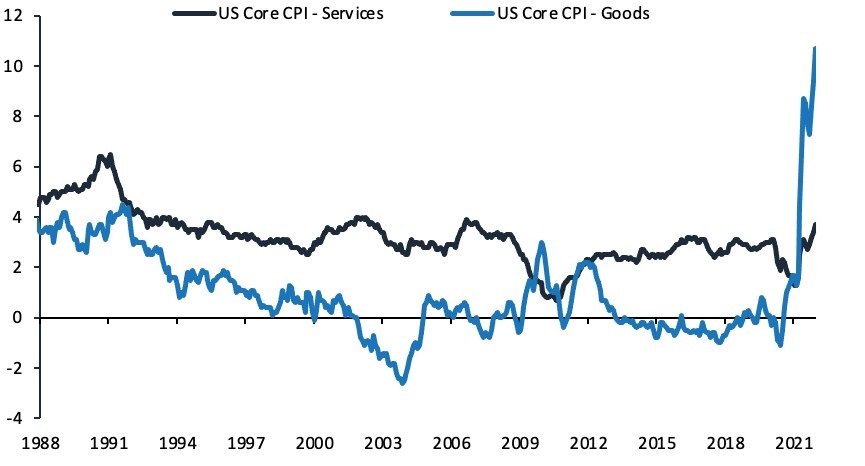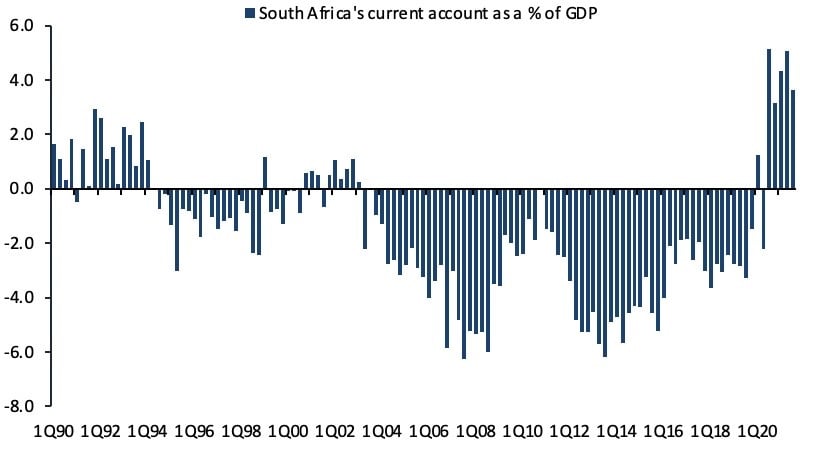
The "normalisation cycle" in interest rates may not be all that normal for South Africa, writes Carmen Nel.
Normalisation means different things in different economies. In the developed world, it entails lifting off the zero lower bound. The UK, Norway, and New Zealand are the first major economies to have started their hiking cycles.
In emerging markets, the process has also begun, but from a significantly different starting point. Most central banks in Central and South America, as well as in Eastern Europe, are well into their normalisation cycles.
Central banks in these regions have been forced to respond to excess demand, rampant inflation and, in some cases, exchange rate weakness. In South Africa, normalisation has already begun, but that does not mean we will get to the equilibrium policy rate in a hurry.
Substantial hiking cycles already underway in select emerging markets
The focus, however, is squarely on what the US Federal Reserve (the Fed) is going to do.
When the Covid-19 pandemic hit in 2020, US policymakers responded aggressively, led by the Fed slashing rates to zero and doubling its balance sheet to US$8 trillion. This was accompanied by coordinated fiscal support in the form of stimulus cheques to individuals.
At the time, policymakers faced the fear of doing too little, opting rather to run the risk of doing too much. The aggressive response paid off with a strong rebound in the US economy, taking most analysts and firms by surprise. However, the consequence of the strong growth rebound was rapidly accelerating inflation.
Many producers thought that the lockdown-induced recession would be a prolonged affair leading to structural change in the level of demand.
This prompted firms to deplete inventories and close down capacity. As the demand for goods recovered and then surpassed the pre-Covid-19 trend in consumption – funded from excess savings (people were no longer eating out or travelling), an unprecedented expansion of unemployment benefits, and from stimulus cheques (free money) – producers had input and product shortages, which drove prices sharply higher. Amazingly, personal disposable income in the US rose, despite 20 million people losing their jobs.
There are many examples of supply chain disruptions intersecting with surging demand, including low lumber inventories meeting a housing market boom, the semiconductor chip shortage curtailing car production that led to surging used car sales prices, and the shipping container shortage that led to a fivefold increase in global freight rates.
The net effect was a rapid rise in US consumer price inflation, which reached 7.0% in December 2021, the highest rate since 1982.
Sharp acceleration in US core goods price inflation
This acceleration was driven by goods price inflation, which was exacerbated by the rebound in the oil price. Core goods CPI inflation reached 10.7% in December 2021 after averaging 0% in the decade preceding the Covid-19 pandemic. While services inflation moderated during the lockdown, reopening, labour shortages, and the housing market boom have pushed services inflation to moderately above pre-Covid-19 levels, even as services consumption remains below the pre-Covid-19 trend.
There are early indications that the supply disruptions are starting to ease, which suggest that much of the inflationary pressures should ultimately be transitory. The problem is that the duration of the pressure is proving to be much longer than initially expected, increasing the risk that inflation persistence (not necessarily higher inflation) could de-anchor inflationary expectations with a spillover to wage growth, and thereby inducing a wage-price spiral.
The ageing population in the US, a shrinking labour force, and disincentives to re-enter the labour force (linked to the limited reopening of schools and excess savings position of households) would exacerbate wage pressure given the supply-demand imbalance in the labour market.
If high prices do not solve the problem – by forcing substitution to cheaper products or encouraging additional supply – then the Fed may be forced to respond with faster policy normalisation. Yet, we already know that the Fed fears doing too little, given the more hawkish rhetoric of late, but that it does not want to run the risk of doing too much, given the reliance of the US (and global) economy and markets on easy policy.
Not a 'normal' normalisation cycle
A Fed that turns more hawkish and a stronger US dollar will tighten global financial conditions, which will have consequences for small open economies, such as South Africa.
The local interest rate market is already pricing in the expectation of aggressive rate hikes by the South African Reserve Bank (SARB). Based on the longer-run policy history, this makes sense. In the past, exchange rate weakness that stems from the Fed’s tightening cycle has often forced the SARB to tighten.
It is usually not immediate, nor one-to-one, but the SARB usually hikes sometime after the Fed does, rather than risk further exchange rate weakness.
Yet, this normalisation cycle may not be all that normal for South Africa. A number of conditions are in place to suggest that the path to normal may be gradual and prolonged:
- Headline inflation is within the SARB’s 3% - 6% target range, with the recent pick-up largely due to the higher oil price. Core inflation is running below the 4.5% target mid-point and has been below that of the US since April 2021.
- South Africa’s real interest rate (the repo rate less core inflation) at 0.5% is almost 6 percentage points above that of the US (at -5.2%), providing a reasonable real rate buffer for the exchange rate.
- Whereas the US output gap has moved into positive territory (i.e., GDP is running above trend), South Africa still has a negative output gap, which should curtail inflationary pressures.
- Credit growth is pedestrian, with credit extended to households growing by 5% year-on-year and corporate credit growth flat lining at 0%.
- Money supply growth has recovered of late, but remains contained at mid to low single digits, which limits depreciation pressure on the currency.
- The current account balance - which is usually South Africa’s weak point (recall the "Fragile Five" of 2013 when the rand was hit by the Taper Tantrum) - has moved to a surplus, reducing the vulnerability of the rand.
- Importantly, if the finance minister follows through on the planned budget consolidation, then the fiscal tightening would reduce the need for aggressive monetary policy tightening.
Current account not a risk to the rand
The rhetoric from the SARB shifted in March 2021, revealing that policymakers fear doing too little in the face of tightening global monetary policy. At the same time, the fragility of the local economy – evident in subdued business confidence, weak consumer sentiment, and high unemployment and poverty levels – makes the Monetary Policy Committee cognisant of the risk of doing too much in terms of rate hikes. It would seem that considered pre-emptive rate hikes could strike the right balance.
Expect forecast downgrades
The best of the base effects is clearly in the base, but leading indicators, such as the PMI, point to a rebound in the fourth quarter activity. We expect a 1.2% - 1.5% rebound in GDP in Q4, but pending restrictions due to the Omicron variant pose downside risk to this estimate. The third quarter data and elevated uncertainty should prompt analysts to downgrade their GDP expectations for 2021 from c. 5.0% towards 4.5%.
The third quarter was marred by the Delta variant, the attendant alert level 4 lockdown restrictions, a sharp slowdown in global growth, notably in China, as well as the domestic social unrest. These were reflected across household consumption, where all the subcomponents contracted except for spending on healthcare, while private sector fixed investment also fell. The macro backdrop remains challenging given the Fed’s taper and renewed travel restrictions on South Africa.
MPC likely to continue hiking rates
Notwithstanding the negative surprise in the GDP release, we do not think it is sufficient to deter the SARB from hiking the repo rate further.
The MPC is likely to focus increasingly on upside inflation risks, particularly related to vulnerabilities to the exchange rate.
Hence, further repo rate hikes in the short to medium term should not be ruled out, even if these are unlikely to be as aggressive as the interest rate market is currently pricing in.
Carmen Nel is an economist and macro-strategist at Matrix Fund Managers. Views expressed are her own.




 Publications
Publications
 Partners
Partners















